30 expert tips for growing your own fruit and veg
Grow your own with this beginner's guide
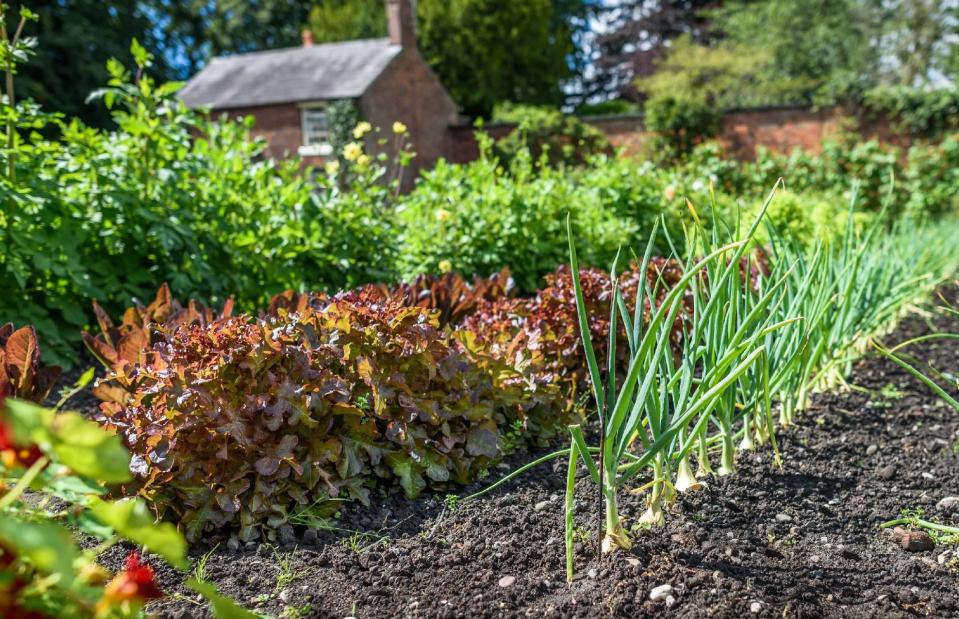
Marbury / Shutterstock
Nothing is more satisfying than growing your own fruits and vegetables. Apart from often tasting better than the commercially produced crops that have travelled thousands of miles and sat on supermarket shelves, homegrown food can be more nutritious and could save you money, too.
Plus, as grocery prices are rising, there has never been a better time to grow your own. Read on and we'll show you how to start a new vegetable garden, from sowing those initial seeds to your first harvest...
Why grow your own?
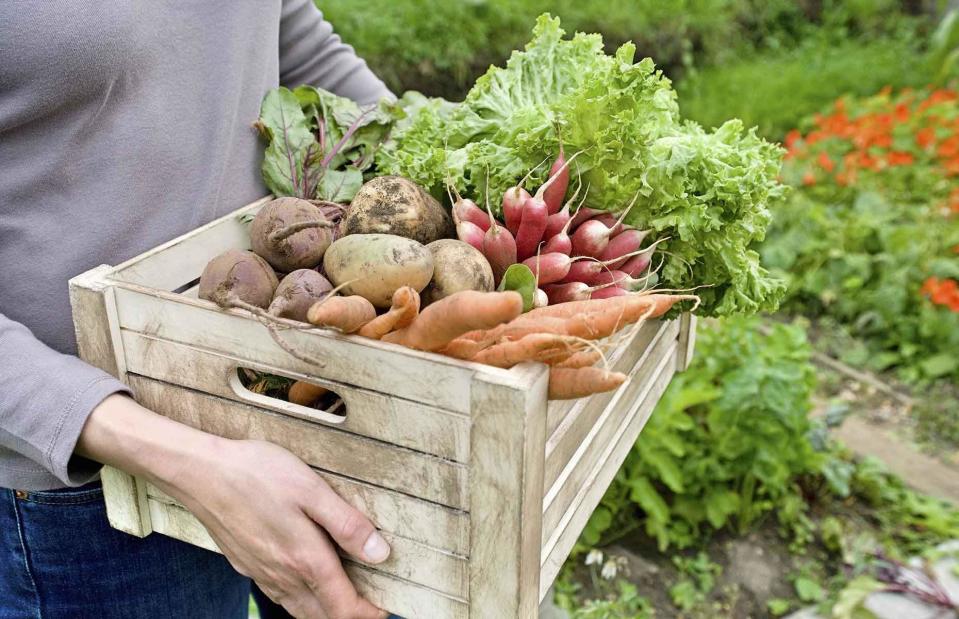
sirtravelalot / Shutterstock
Growing your own crops does take a little time, effort and initial investment, but they'll be rewarded when harvest time comes around. There’s nothing quite like having a regular supply of fresh and tasty fruits and vegetables, direct from your garden to your table.
Plus, gardening is good for the body and soul. A busy day in the garden can be a good form of exercise. Getting regular exercise relieves stress and anxiety while boosting energy levels. Moreover, a daily dose of sunshine produces Vitamin D – essential for healthy bones and teeth.
Environmental benefits
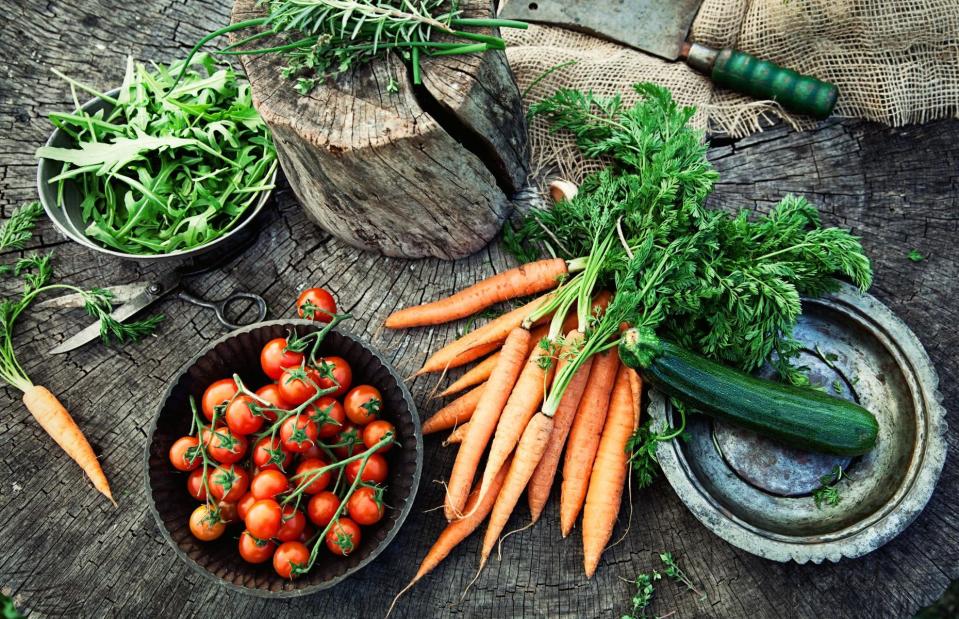
Mythja / Shutterstock
Growing your own also has environmental benefits. Many fruits and vegetables are imported from other countries, which rely heavily on fossil fuels. In fact, a study by Nature Food found that in a single year, global food miles were responsible for three billion tonnes of CO2 equivalent emissions.
By growing your own food, you will immediately reduce your carbon emissions. Plus, you're in control, so you can ditch the nasty chemicals and pesticides that are routinely used in commercial farming, contaminating the environment and harming wildlife. But where do you start?
Where should you put your vegetable garden?
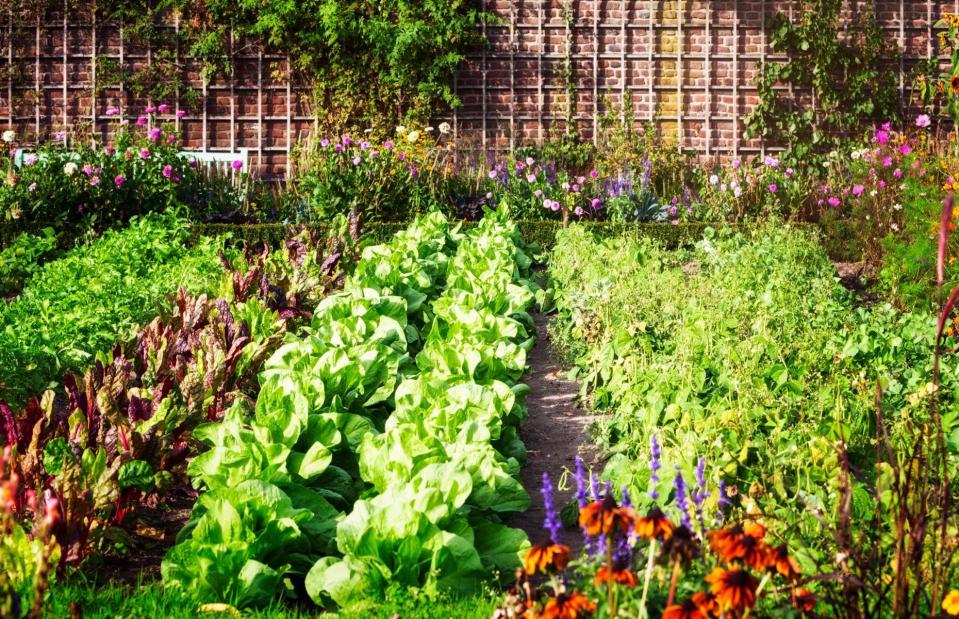
Irina Fischer / Shutterstock
Perhaps the most important factor when starting a vegetable garden is deciding where to place it. Some vegetables thrive in slight shade, but most need sun to grow well. Crops are unlikely to grow under a tree or in deep shade.
Pick an area that's level, for even watering and proper drainage, and ensure the spot receives good levels of sunshine. Most vegetables will need at least six hours of full sunshine every day. You'll also want to ensure the location of your patch is sheltered from the worst of the wind since delicate plants can easily be damaged.
Think about access and convenience
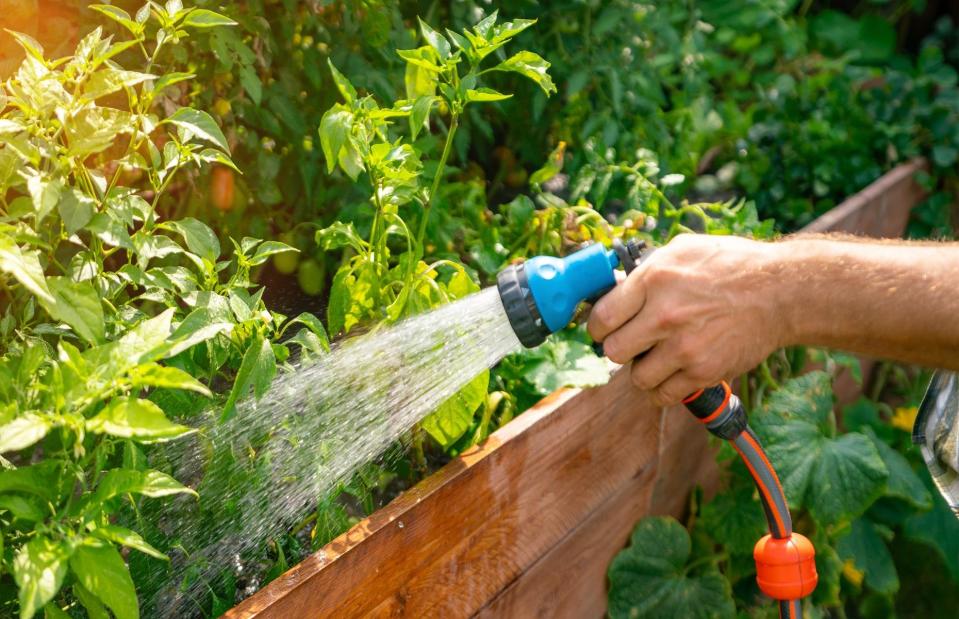
Audio und werbung / Shutterstock
Your garden will need regular attention, so ideally position it close to the house for easy access, with enough space for tending to it. Think about the nearest source of water, too. You don’t want to have to carry large amounts of water a long way, so think about using a garden hose, a drip irrigation system or sprinklers to quench your plants.
Start small
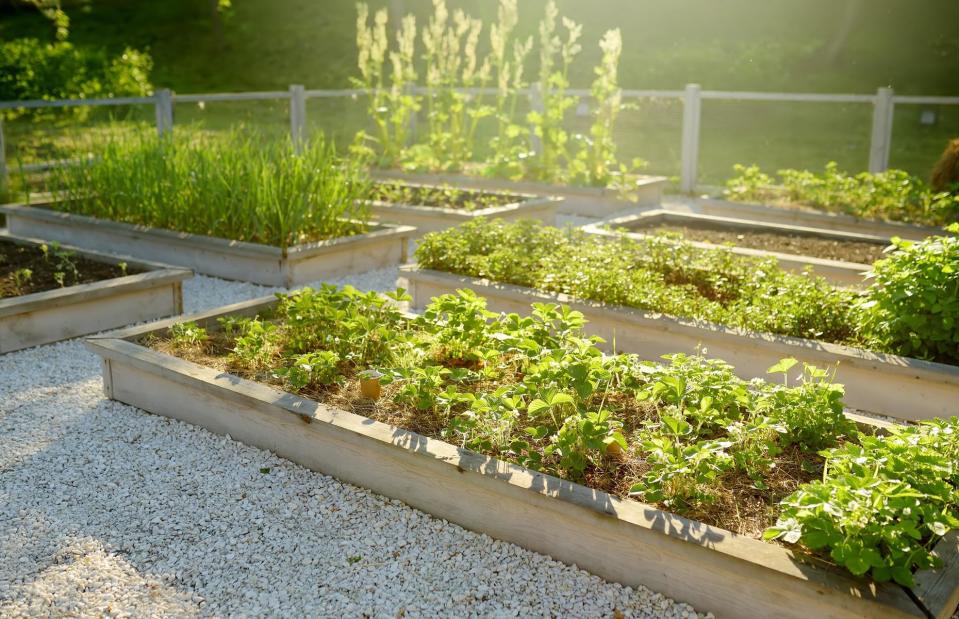
Maria Sbytova / Shutterstock
It can be tricky to decide how big to go with a vegetable garden, but how much space you have will be the greatest limitation on what, and how much, you can grow. One of the most common gardening mistakes is being too ambitious. Remember, tending to one takes time and effort, so start small. Starting with a petite patch will allow you to learn and get that satisfaction without the risk of it getting out of control quickly.
A 10-foot square patch is a good place to begin and will give you the chance to get a feel for how long things take to grow and how much nurturing they need. You can always build up your space, depending on how well you take to your new hobby.
Prepare your soil
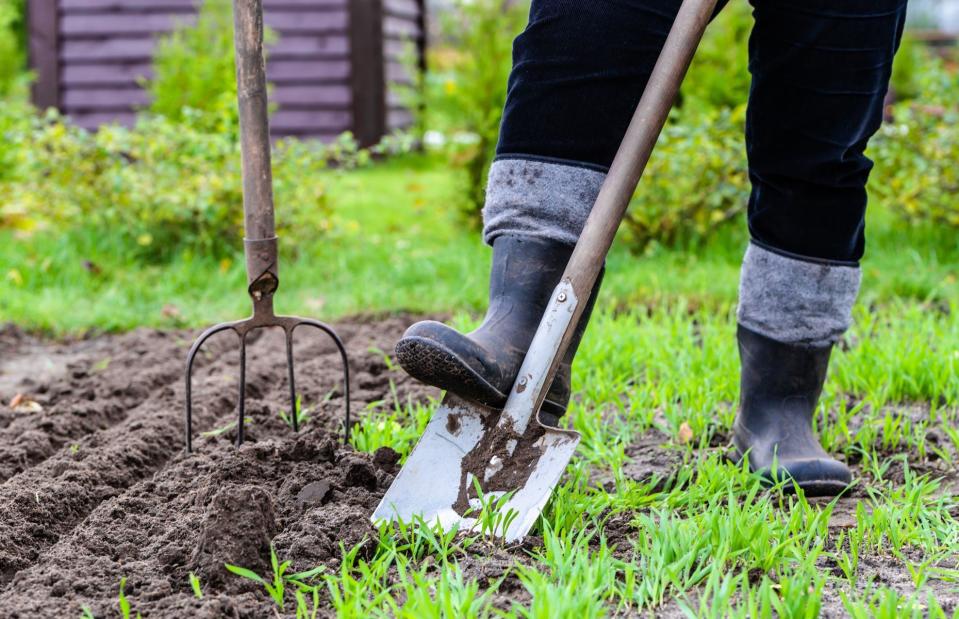
Alicja Neumiler / Shutterstock
Preparation is everything, so start by understanding your soil. It's a good idea to do a pH test with a kit to find out how acid or alkaline it is. Most vegetable crops will grow best in neutral soil.
Once you're acquainted with your soil, start by digging out weeds, stems and roots and remove as many stones as possible. Then feed your soil with well-rotted compost or manure, which should be raked level. Add organic matter like composted leaves or shredded aged bark to the surface of the soil when you can – at least once a year to build up long-term soil health. If you need a quick fix, try an organic fertiliser.
Consider using raised beds
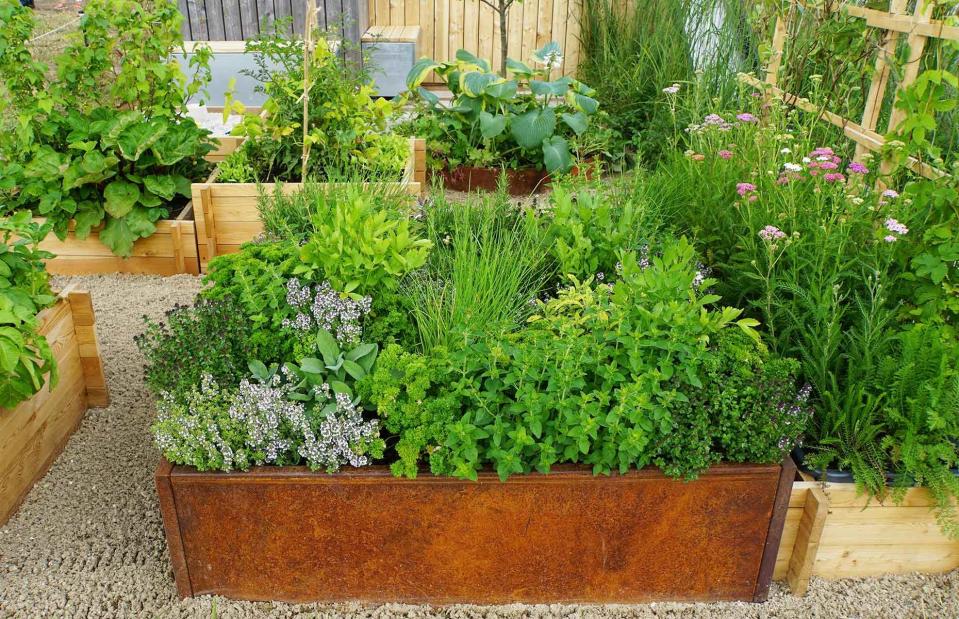
Anne Kramer / Shutterstock
You might be considering growing your vegetables in raised beds and this is a great option for those with limited space or difficult soil with poor drainage. If your soil contains a lot of chalk or clay, it's easier to grow veg in raised beds. Fill them with a combination of soil-based compost, green waste and topsoil.
Raised beds allow the soil to drain faster and warm more quickly in the spring, meaning plants will start to grow earlier in the season. They are great for beginners, too, since you can control the quality of the soil by adding nutrient-rich soil and compost from the outset, ensuring success. They are also attractive and easier to maintain.
What can I grow on a balcony or patio?
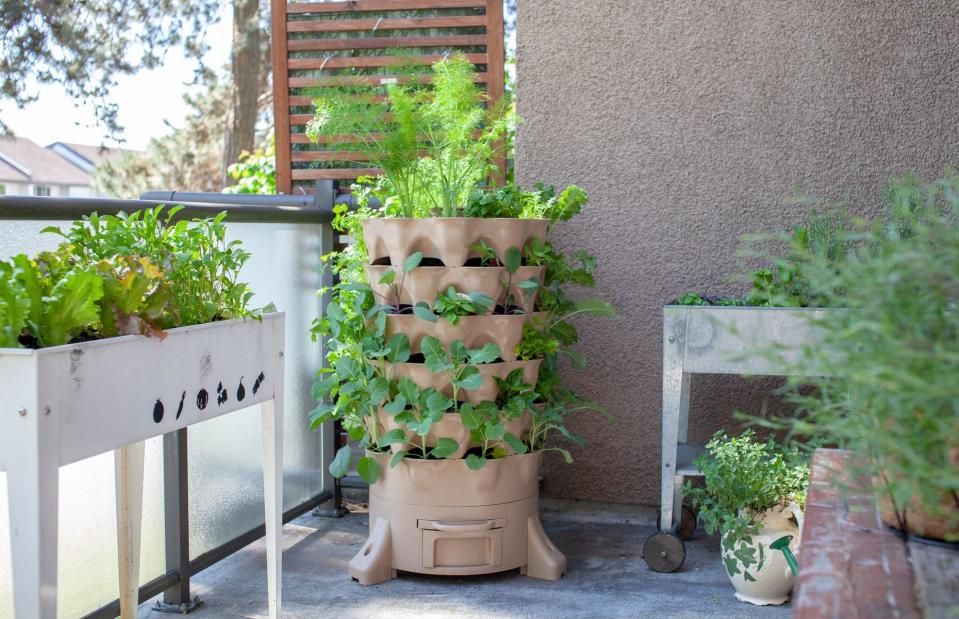
Ashley-Belle Burns / Shutterstock
There are lots of fruit and vegetable varieties that can be grown in pots or containers on a balcony or patio, if you’re short on space. Use pots of different heights to add visual interest and think vertically, too. If space is limited, it makes perfect sense to include a variety of vertically growing plants such as tomatoes, Pole beans, peas and cucumbers.
Vertical growers are also less susceptible to fungal issues and it will be more obvious when they are ready for harvesting. You can fix growing systems, like trellis or shelves, to walls and hanging baskets are great for dwarf bush tomatoes. Combine flowers and edibles in pots for a display that tastes as good as it looks.
Deciding what to grow
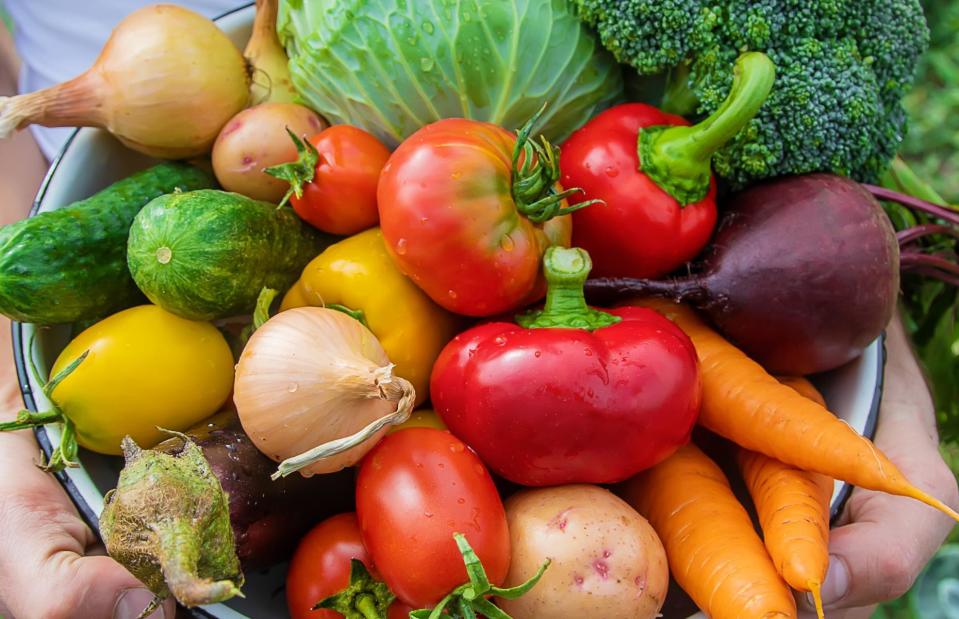
Tatevosian Yana / Shutterstock
It makes sense to grow your favourite fruit and vegetables, but you might also consider those that are most costly to purchase, so you can save money as well. “Often, people grow food like carrots and potatoes that are very cheap to buy – and spend a lot of money doing that,” Leigh Hunt of the Royal Horticultural Society (RHS) told The Guardian. Instead, he suggests growing salad leaves. “A pillow packet of lettuce is going to cost at least £1. But lettuce and rocket are the kind of crop you can get cheaply and grow readily.”
Plus, it's worth remembering that some varieties are easier to grow than others. If you’re a beginner, your best bet is to choose easy-to-grow crops, like courgettes, beans, mangetout peas, strawberries and cucumbers, which require little maintenance and are ready to harvest within a short time frame.
Timing is everything
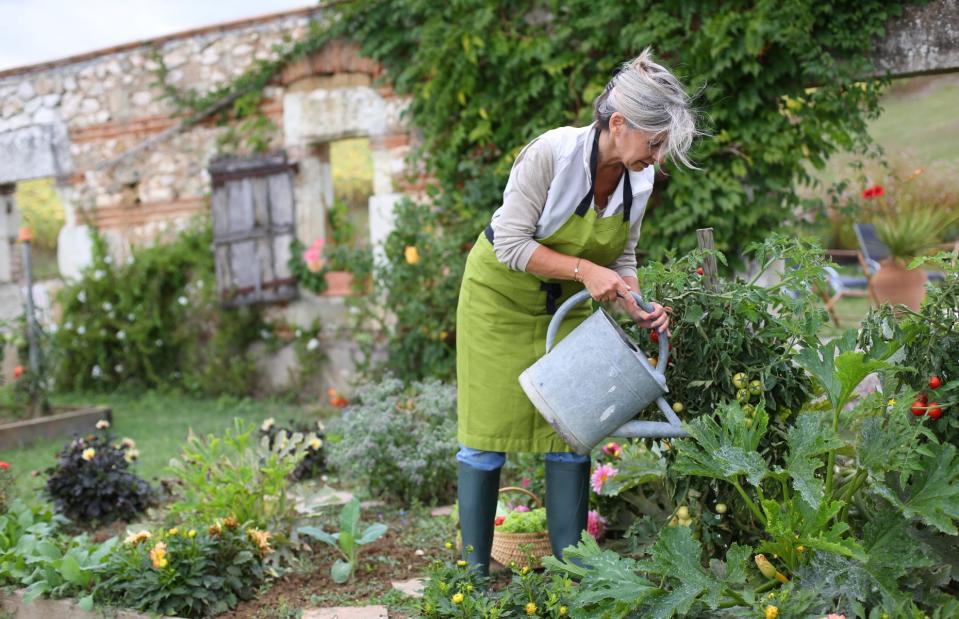
good luz / Shutterstock
Spring and autumn are generally the best times to start a vegetable garden, as temperatures are neither too hot nor cold. However, plant too early in spring and tender plants could be caught out by a sudden frost, or fail to thrive at all. In the UK, you can generally sow some seeds directly into the soil from March onwards, when the soil has warmed up, dried out and has a crumbly texture.
As well as checking the seed packet label instructions about when to sow, it's also a good idea to look at the weather forecast as the soil may be too cold to start sowing outside. A handy tip is to cover the soil with black plastic or horticultural fleece around two weeks before sowing outdoors to help the soil warm up.
Plan your vegetable garden layout
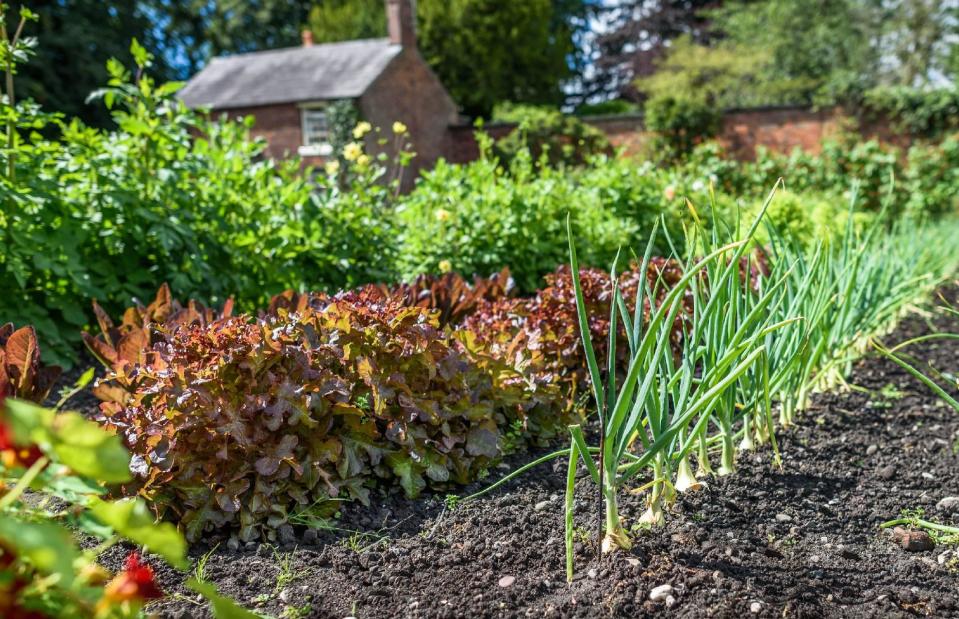
Marbury / Shutterstock
If you want a range of crops to harvest, plant one-to-two-metre rows of different crops: a metre-row of salad leaves, radishes and coriander, for example, and a two-metre row of dwarf beans, swiss chard and carrots. That way you always have a variety of produce available and you can avoid gluts – where all of the produce ripens at the same time and you have more than you can eat.
You can plant in rows, in a square pattern or in a triangle, but remember to give each plant space to grow. A good rule of thumb is to make the holes at least two times deeper and wider than the container the plant is in. Plants should be spaced two to three feet apart, so they have room to grow and have access to plenty of sunlight and air circulation.
Invest in essential tools
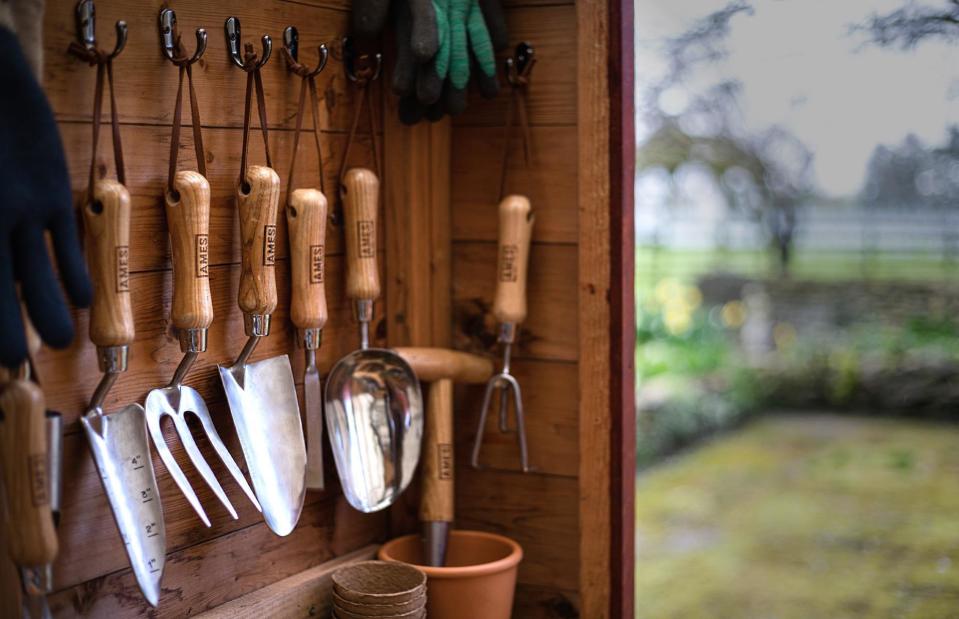
AMES Tools
If you want to give your new hobby a decent chance of success, it’s worth investing in the right tools. Whether you’re tending a few patio pots or an entire walled vegetable garden, you’ll need a pair of gardening gloves to protect your hands.
Secateurs or pruning shears are next, along with a hand trowel for weeding, planting and sowing seeds. You'll also need a watering can and a knee cushion can be highly beneficial. For bigger jobs, you’ll need a hoe, spade, fork, rake and hose.
How to sow seeds
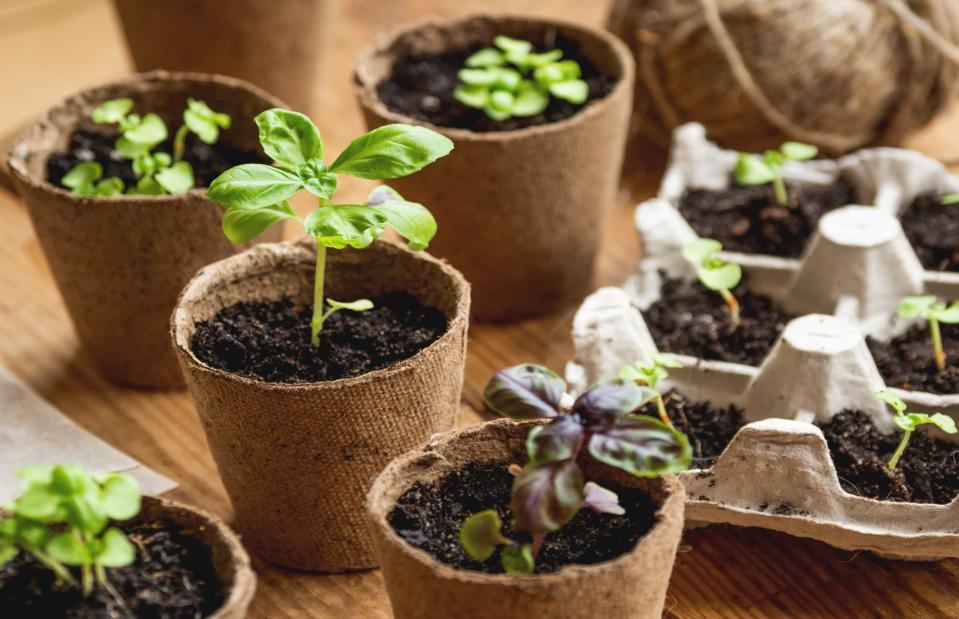
Konstantin Aksenov / Shutterstock
Before you get busy in the garden, you need to consider how your seeds should be sown. This means research. Some seeds can be directly sown where they are going to grow, while others need to be sown in a seed bed and then transplanted to their final growing position. Some other varieties need to be sown indoors in pots of compost.
The RHS states that most seeds won't germinate below a soil temperature of about 7°C (45°F), so you'll need to delay early sowings until the soil has reached this temperature, at least. You can sow tomatoes, lettuces and cucumbers into small pots or trays of compost, water well and cover with cling film (or place them on a warm windowsill), to get them germinating before you can transfer them to the garden.
Direct sowing
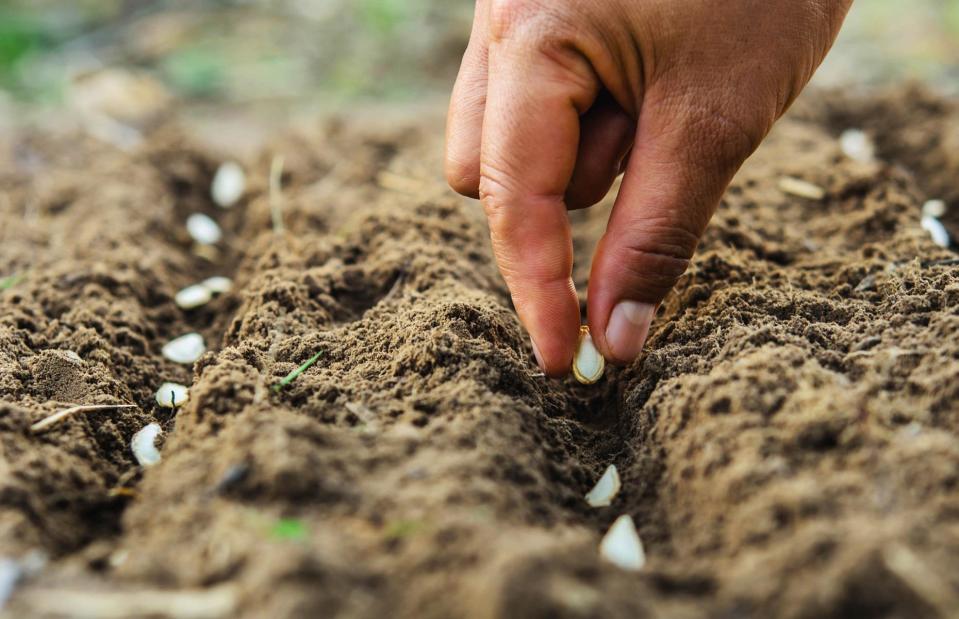
lovelyday12 / Shutterstock
Most vegetables can be sown directly into the soil. Start by making a shallow trench with a garden cane or trowel and insert the seed at intervals (about 5cm apart), before covering with soil and lightly patting it down. Always sow evenly and thinly to avoid excessive thinning out of the crop afterwards. Then water the soil.
Produce like onions, shallots, garlic and broad beans can be sown from March, as can hardy vegetables such as carrots, beetroot and spinach, if you lay cloches or plastic sheeting over the beds, for a few weeks first to warm them.
Give plants the best start
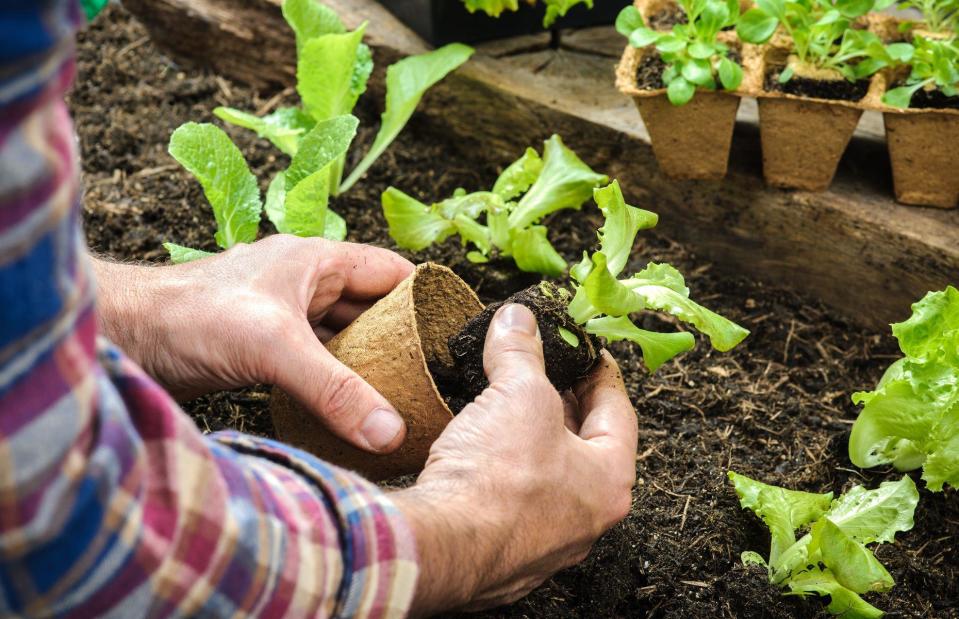
Alexander Raths / Shutterstock
If possible, start off vulnerable plants, such as salad leaves and courgettes, indoors in pots and plant them outside when they are big enough to withstand the cold and attacks from common pests. You'll need to provide your seeds with heat, to encourage them to grow. You can use a thermostatically controlled propagator, a warm windowsill or a conservatory.
Before you plant them outdoors, seedlings will need to be 'hardened off' so that they acclimatise to the temperature. Move them first to a warm sheltered position outside during the day, bringing them in at night, before gradually moving them outside over about 10 days.
Do I need a greenhouse?
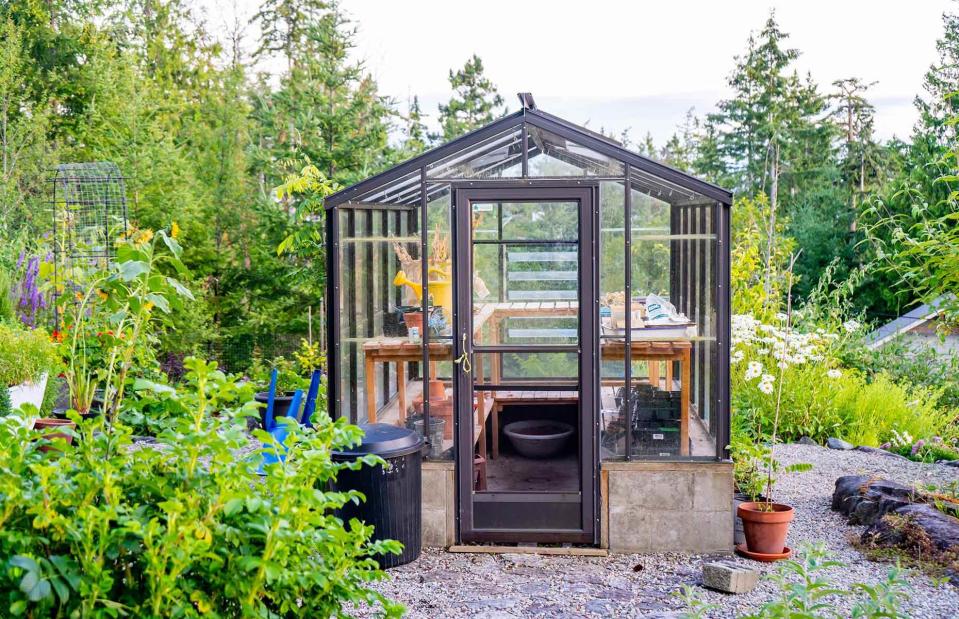
thoughtsofjoyce / Shutterstock
You don’t need a greenhouse to grow fruits and vegetables, but it sure helps. Having a greenhouse allows you to grow more crops for longer.
You’ll be able to start crops earlier on in the season and extend harvest time, producing a much greater yield. This is because the warm, humid environment of a greenhouse is perfect for growing. A greenhouse can also allow you to produce more crops from seed, which is much cheaper than buying established plants.
How to grow tomatoes
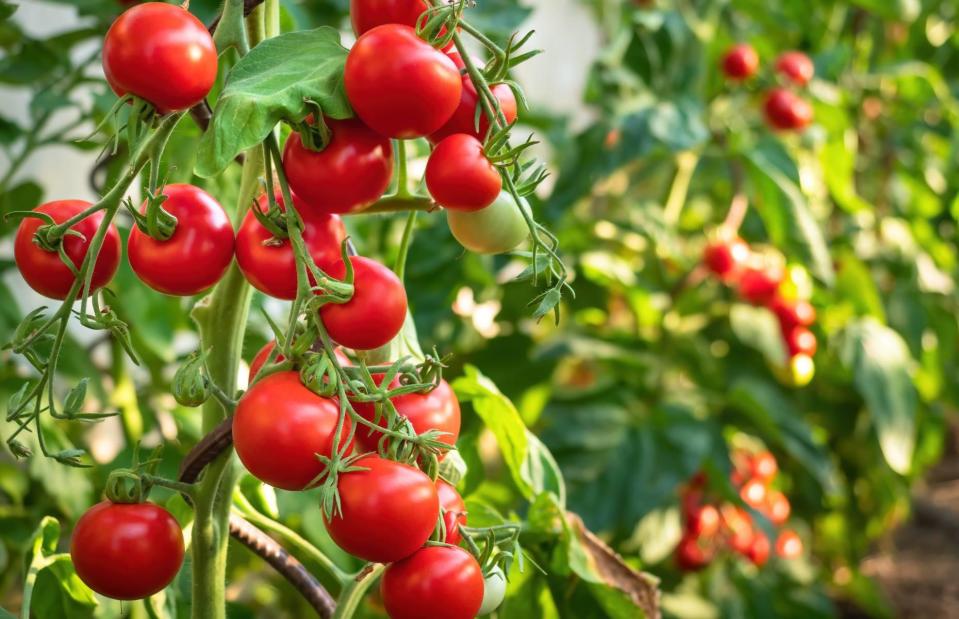
Digihelion / Shutterstock
Tomatoes are a good example of a crop that benefits from starting off indoors. All you need is some seed compost, a seed container and propagator, if you have one, or a sunny window ledge if you don’t. Plant tomato seeds indoors at least six weeks before the final frost is expected in your area. Alternatively, wait to purchase store-bought seedlings in the spring.
Sow your seeds at two-inch intervals, cover with a layer of compost and water well. Transfer the seedlings to pots and when they’re bigger and the weather is warmer, you can plant them outside in the ground. "Your little seedlings should grow to about 6 to 8 inches (15 to 20.5 cm) high, and have developed four to six real leaves before you transplant them to the garden or a larger pot," recommends Gardening Know How.
How to water properly
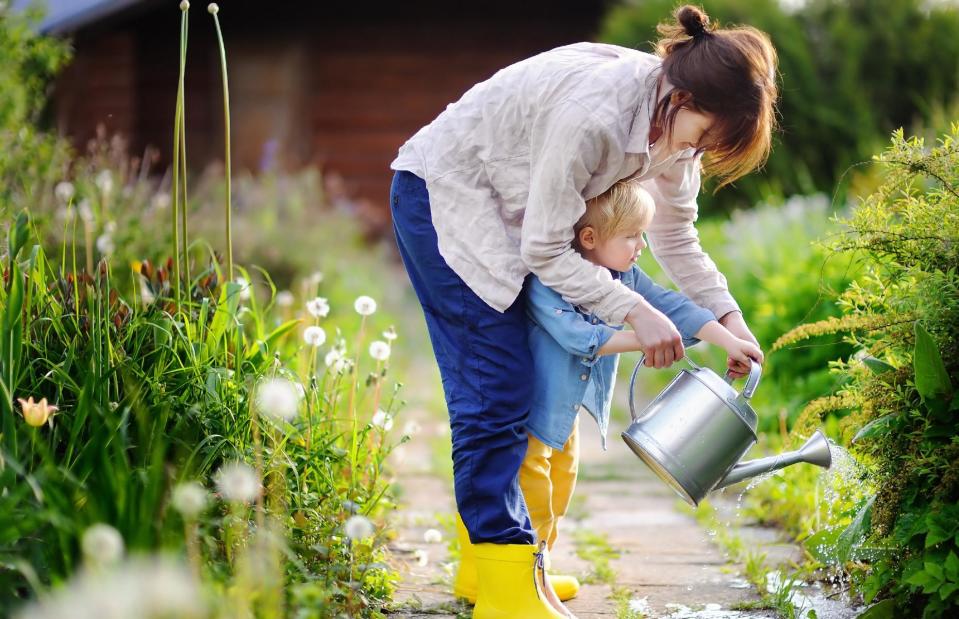
Maria Sbytova / Shutterstock
Most plants need an average of one-to-two inches of water a week. They will need more water as the temperature heats up and it is better to water well once a week than a little every day.
This forces the roots to reach down further into the soil to find moisture. Obviously, plants in pots can’t do this so you will need to water them more often.
How to stay on top of weeds
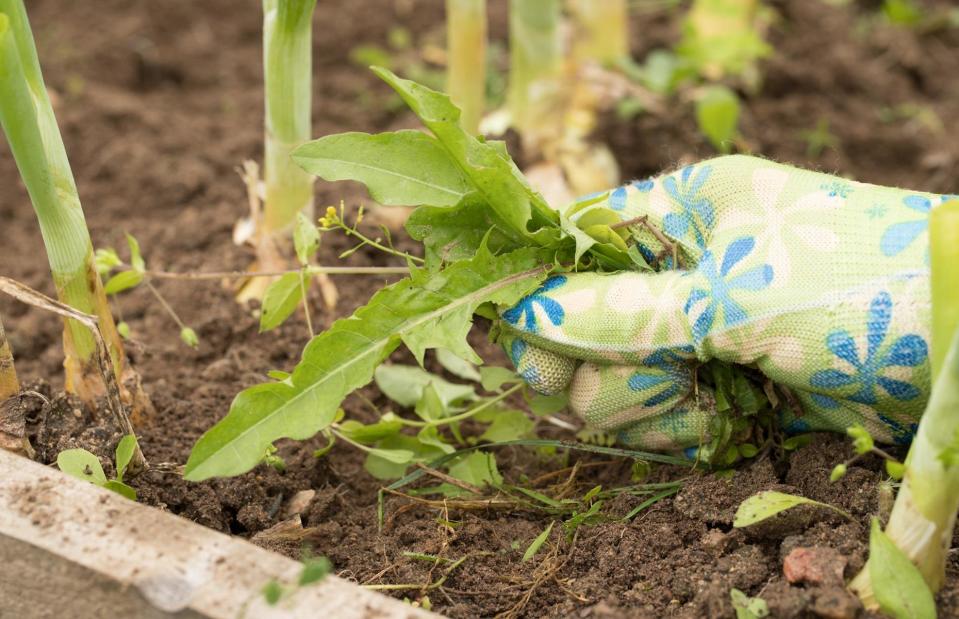
Elena Masiutkina / Shutterstock
Remove weeds as soon as you see them, so that they don’t have the opportunity to produce seeds and spread. Weed by hand or use a hoe, keeping the blade edge sharp to sever the weeds, so that they can be left to wither where they fall.
Pest control
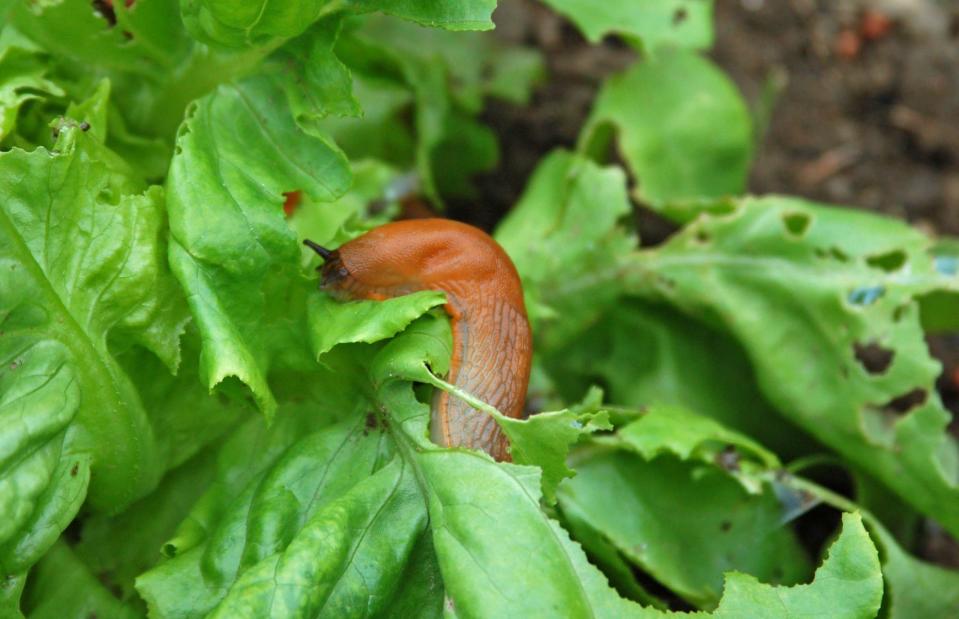
Dieter Hawlan / Shutterstock
Our gardens can't thrive without insects, but some common garden pests can destroy your plants before you've had time to harvest anything. Before you reach for the insecticide, try some lower-impact methods first.
Picking off large insects and caterpillars by hand and dropping them into a bucket of soapy water is a safe, effective way of dealing with limited infestations. Water can dislodge many tiny bugs, too, and regular weeding can help, since insects love to hide. If you have to resort to insecticides, try to go for an eco-friendly pesticide and follow the label guidelines carefully.
Make mulch your best friend
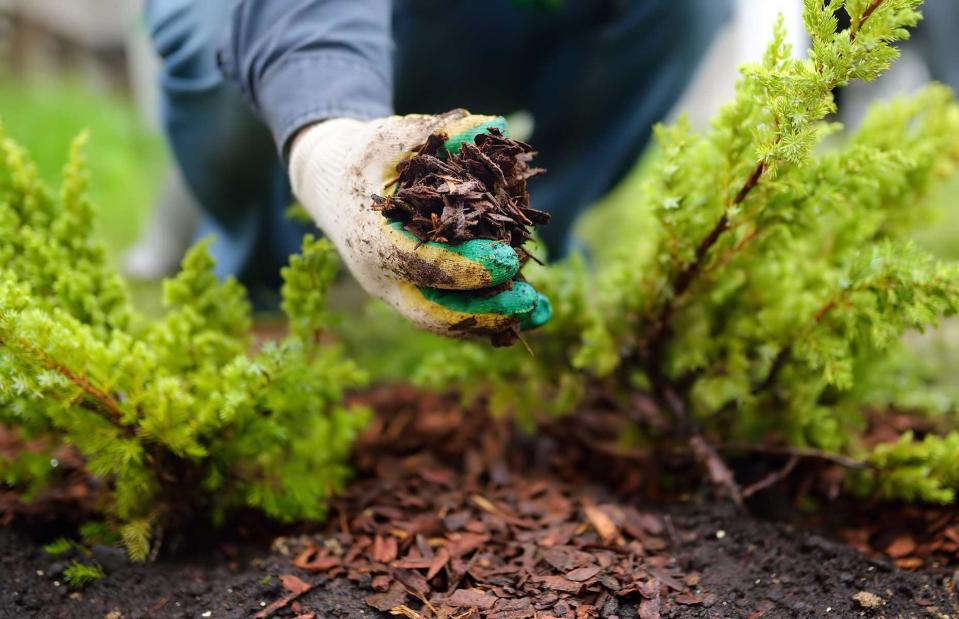
Maria Sbytova / Shutterstock
Mulch is a gardener's best friend. It's fantastic for suppressing weeds and deterring pests from munching on the fruits of your labour. It also helps the soil retain moisture, which means less watering is required – reducing your utility bills.
Mulch can include bark, straw or wood chips – all available for mere pennies – and the type you select for your veg garden will depend on the crop itself, the weather and your soil type. Remember, mulch should be placed on soil after weeding, around an inch away from plants and applied in layers between 5cm (2in) and 7.5cm (3in) thick.
Give companion planting a go
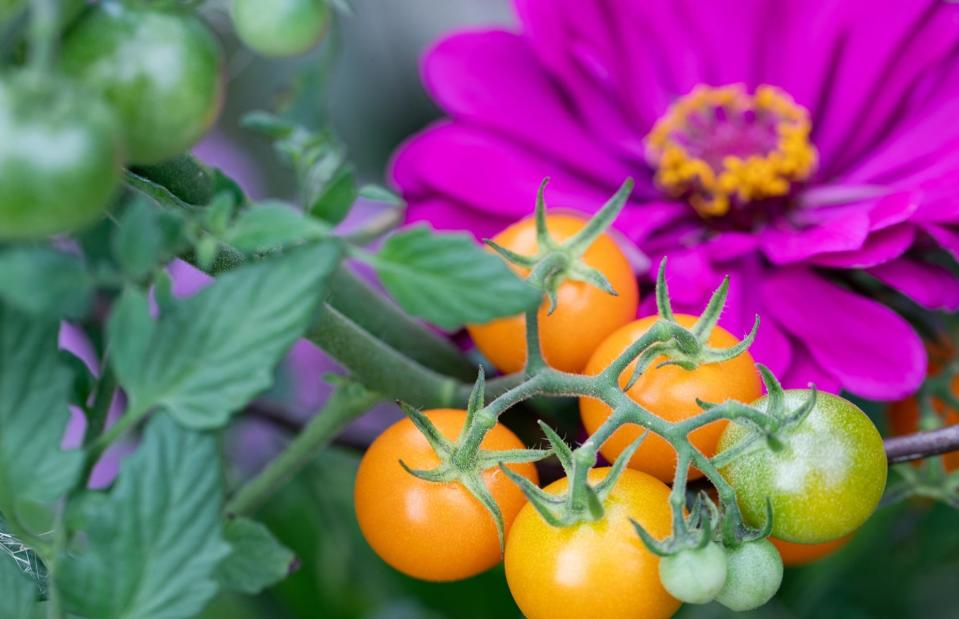
Molly Shannon / Shutterstock
Companion planting is the process of placing plants next to others, for the benefit of one or both. Grow Veg explains: "By growing, for example, French marigolds among your tomatoes, you can minimise the risk of aphids, while growing nasturtiums close to brassicas like cabbage may help to lure caterpillars away from your crop."
Tidy up … but not too much
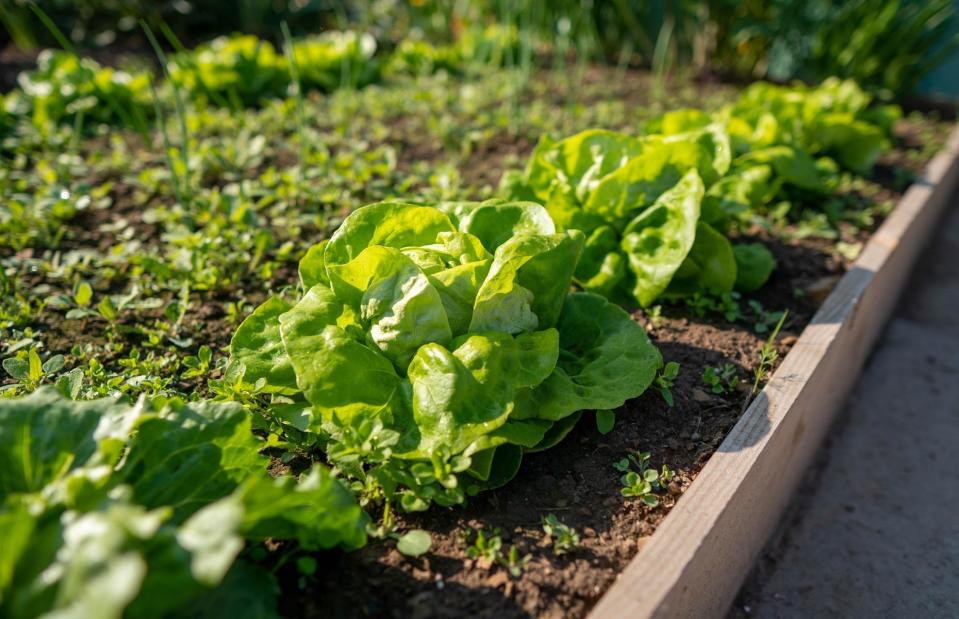
Tomas Bazant / Shutterstock
It’s a good idea to have a tidy up at the end of every season, but don’t overdo it. Leaving plants in the soil to decompose naturally improves the quality of the soil by adding nutrients.
Old seed heads can help feed birds over the winter, grasses can add texture to the soil and fallen leaves can be used on compost heaps.
Create a workstation
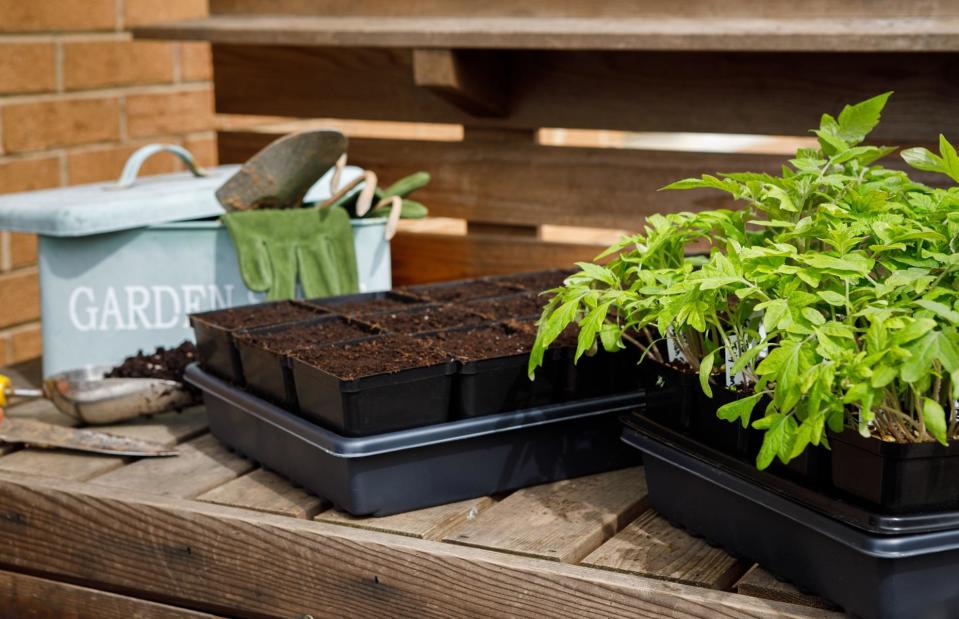
eurobanks / Shutterstock
From repotting your tomato plants to propagation, all vegetable growers need space to do their work. That's why a workstation is essential. A raised work surface will be kinder to your back, while a potting table will help you avoid accidentally mixing up different types of soil. This could inadvertently harm the growth of your plants.
You can go out and spend money on a fancy potting bench, but you can also save cash by upcycling an old side table or getting crafty with a few planks of wood.
Keep picking and producing
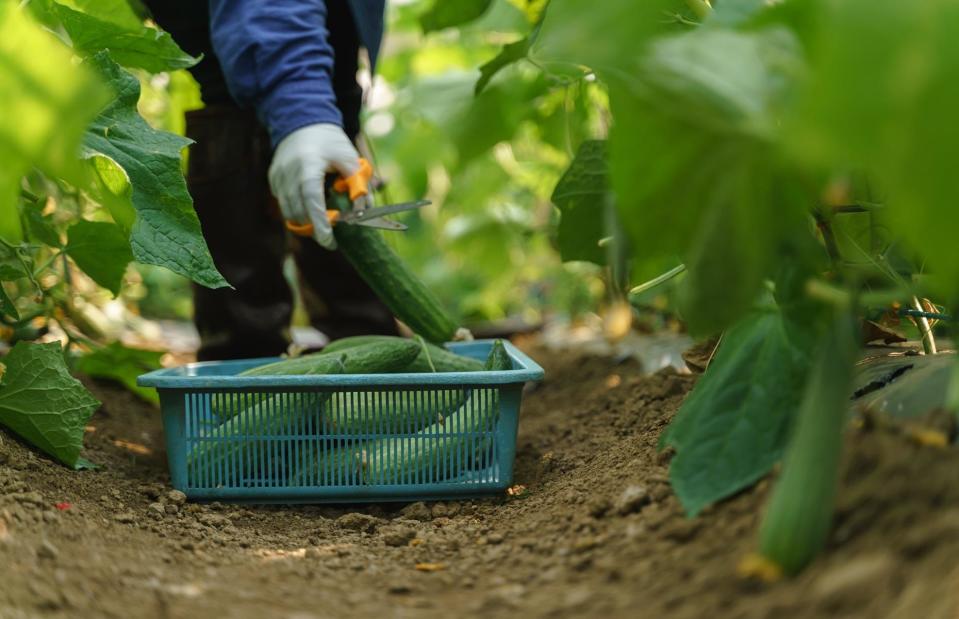
BonNontawat / Shutterstock
Some vegetables must be picked regularly to stimulate growth. Beans, courgettes, peppers and tomatoes are just a few examples where picking will help generate more produce.
The best way to do this is to inspect the plant regularly and harvest as soon as they are ready. Always collect vegetables like courgettes and beans when they are younger, when they are more tender and taste sweeter.
Keep notes
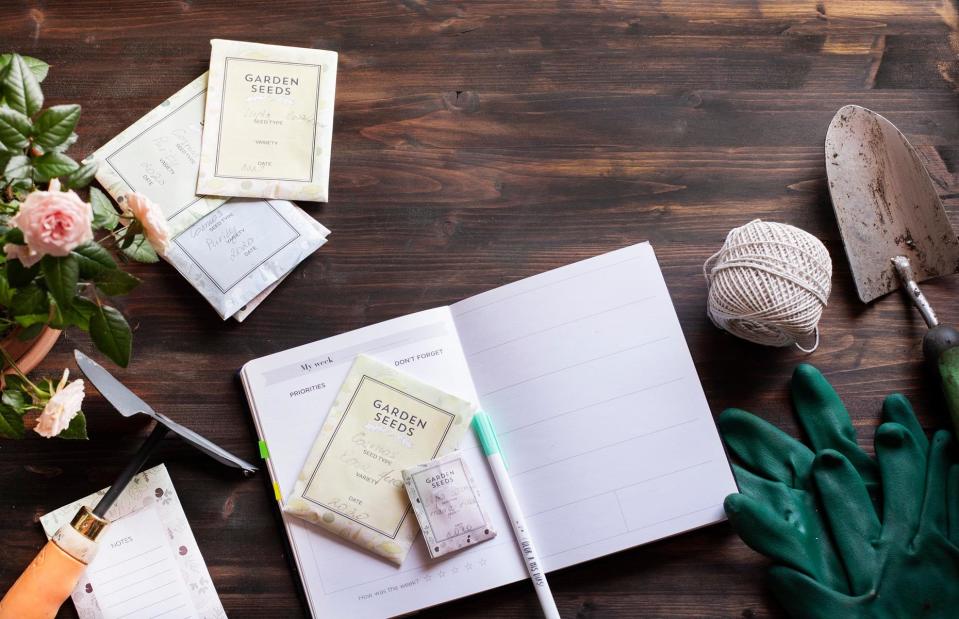
Evgenia Tuzinska / Shutterstock
Once you’re up and running, keep note of everything. Write down what has worked best and which pests have become a problem. Record when you sow seeds, when you harvest produce and which crops you have rotated where.
Keeping a record will take the graft out of gardening and you’ll become an expert in no time. Meanwhile, you’ll be feasting on fresh fruit and vegetables throughout the year.
Getting the children involved
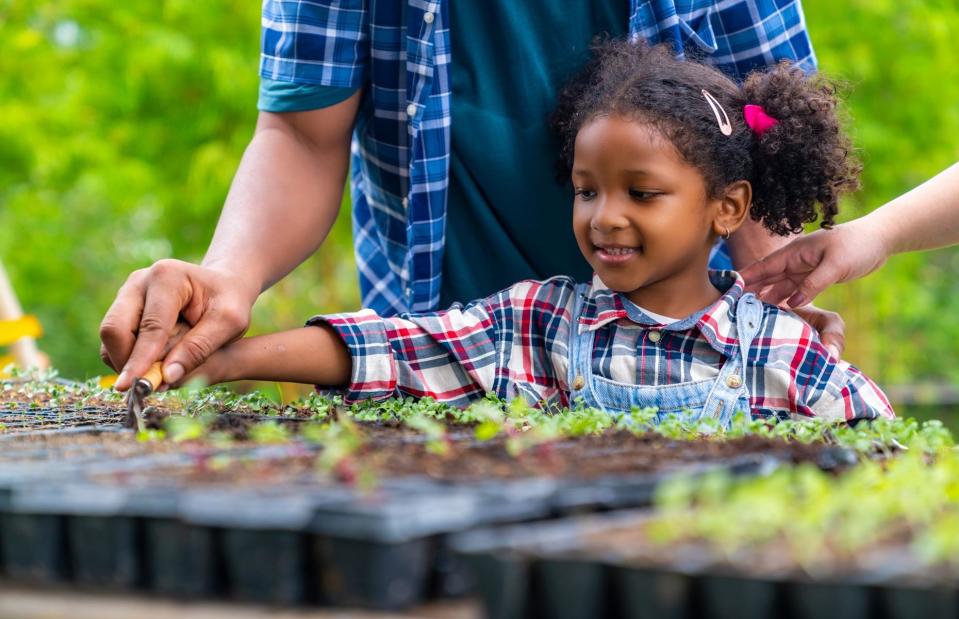
CandyRetriever / Shutterstock
Growing vegetables is a great way to get the whole family involved in gardening. While short-term patience is required, children quickly see the fruits of their labour.
It’s also ideal for teaching them about where their food comes from and the environment in general. Fast and tasty crops to consider are strawberries, peas and mini carrots, as well as cherry tomatoes.
Gardening for all ages and abilities
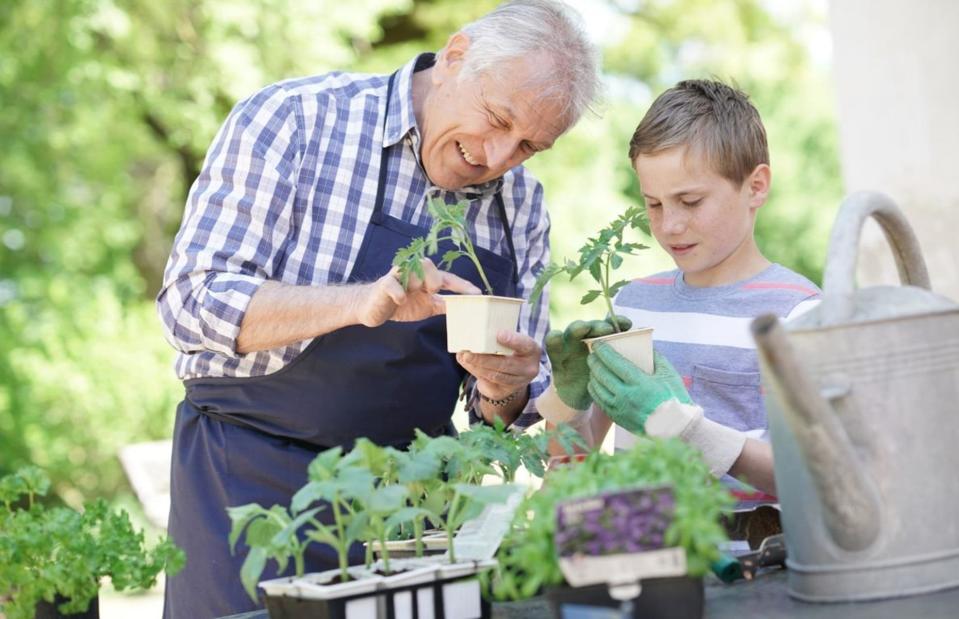
goodluz / Shutterstock
Long associated with retirement, there’s a reason so many people gravitate towards gardening in their later life. As well as being an enjoyable form of exercise, which improves the blood flow to the brain, gardening encourages the use of all motor skills and improves a sense of well-being.
It has even been shown to help reduce the risk of dementia by up to 20% according to studies, reports the Daily Mail. And then there are the nutritious vegetables, which are a good source of vitamins and fibre for all ages. But remember, gardening is for anyone, of all ages and abilities!
Turn to hydroponic systems
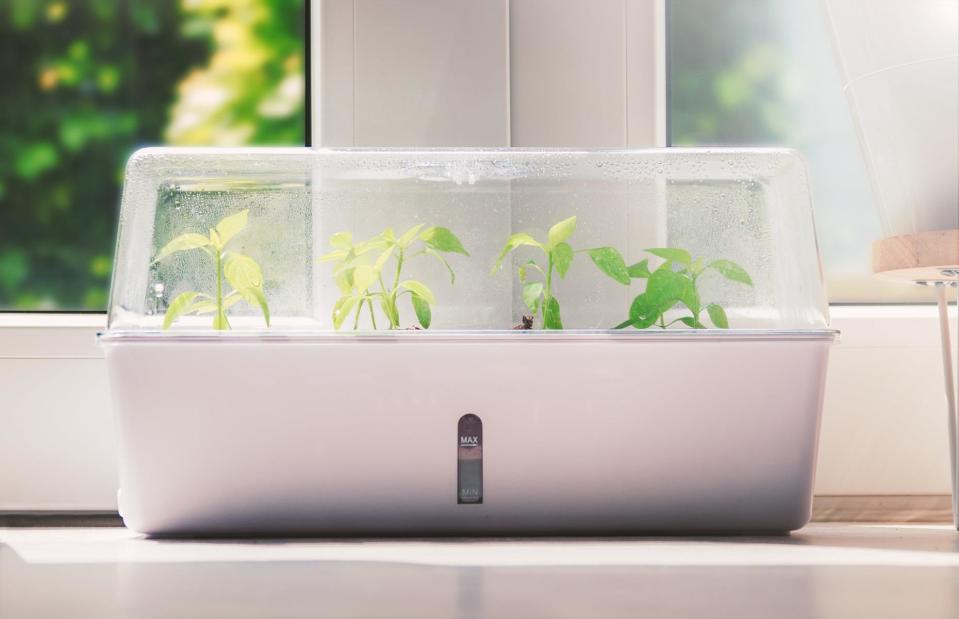
dennispentek / Shutterstock
If you really can’t face all that digging and getting your hands dirty, but still want freshly grown herbs and veggies on hand, you might consider one of the impressive hydroponic systems currently on the market.
These clever gadgets require only water, light and oxygen, along with smart technology, to produce a wide range of crops in urban spaces. Super easy to use and stylish in design, you can have your greens at the flick of a switch…
Keep learning
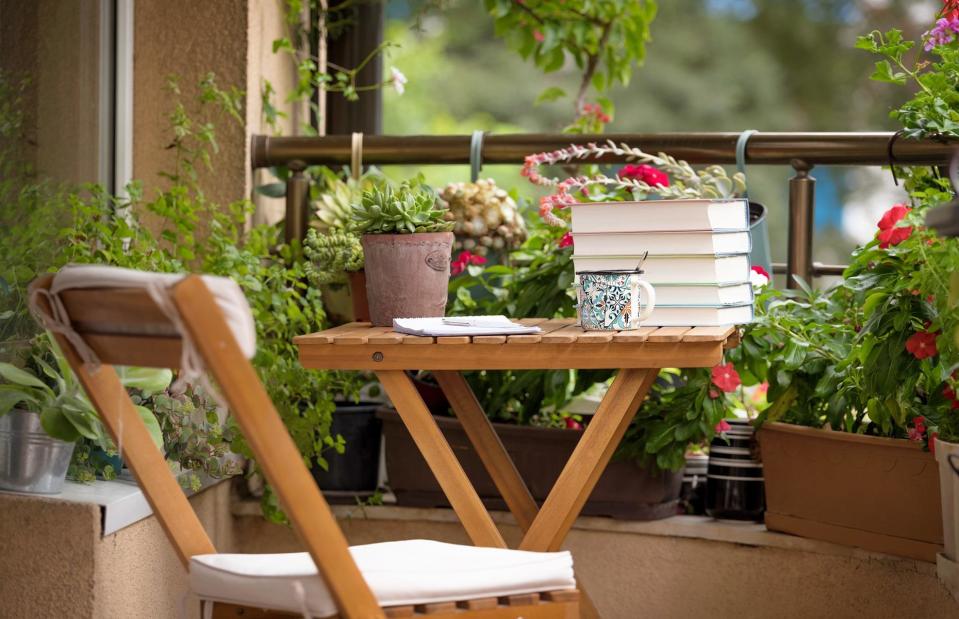
Isa Long / Shutterstock
We're sure it's clear by now that growing a vegetable garden requires patience, time and some level of skill. The best way is to get stuck in and learn from your mistakes. With gardening, there is often more than one way to do something.
Learn as you go and keep learning. You can turn to gardening books, ask Google, watch YouTube videos or approach a neighbour or expert at your local garden centre if you get stuck. Most of all, have fun with it and don't take your vegetable patch too seriously!


